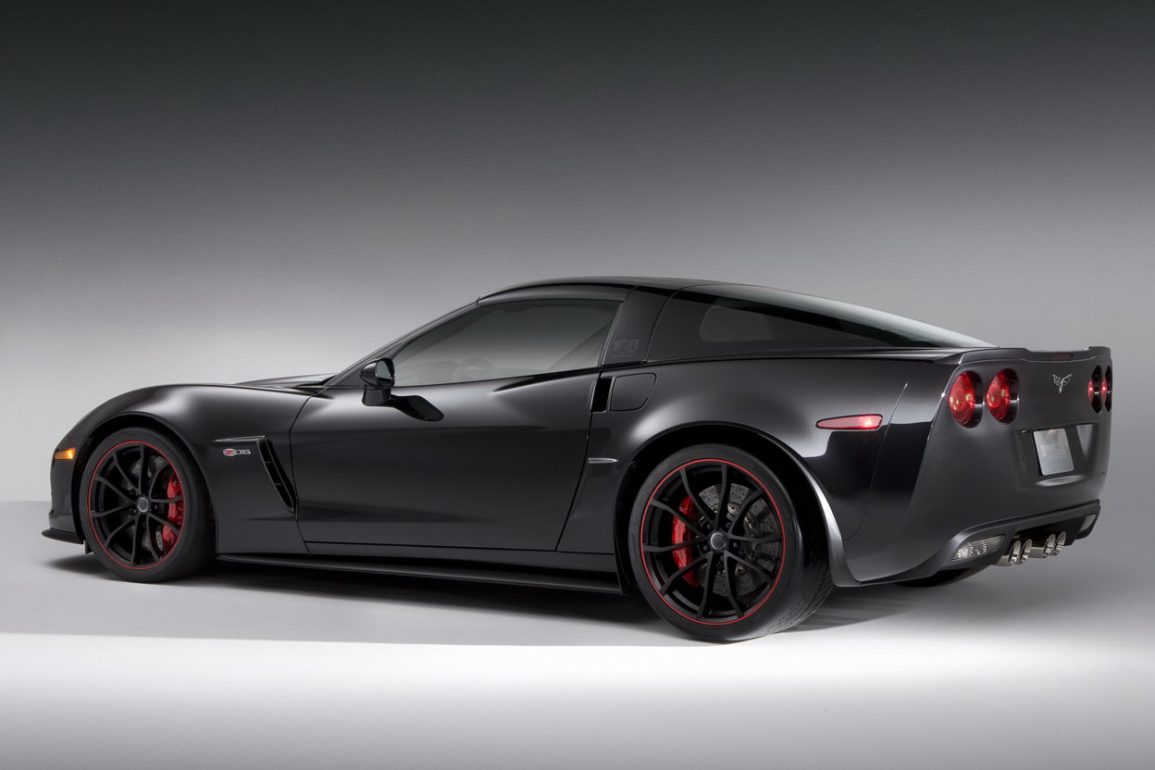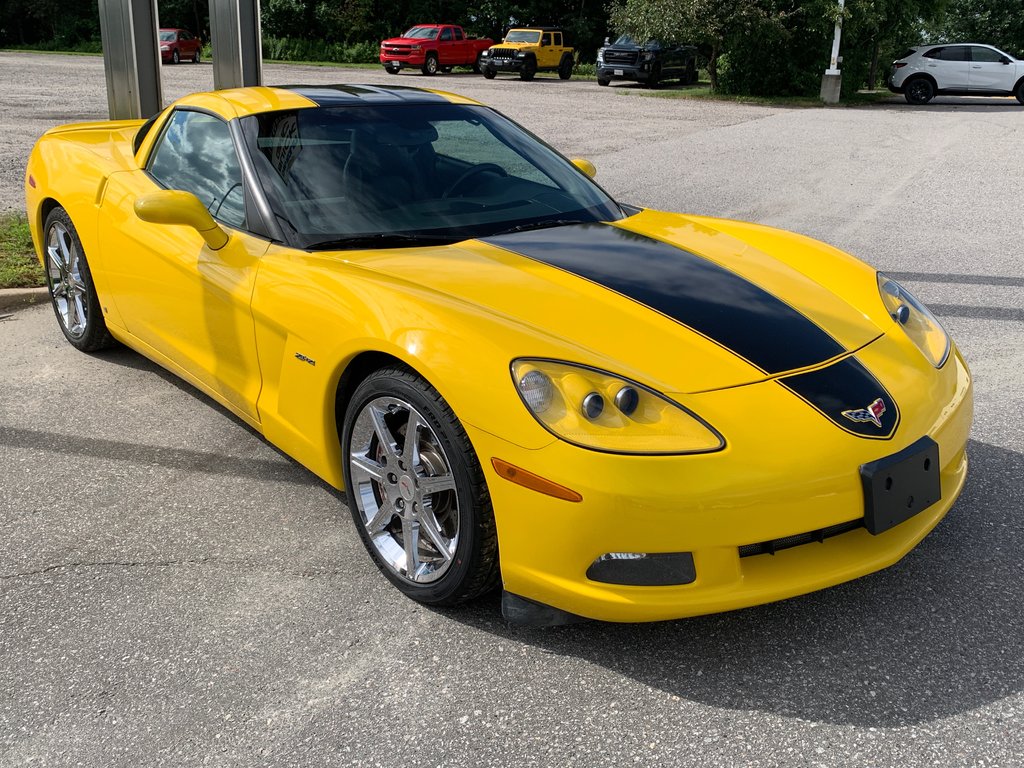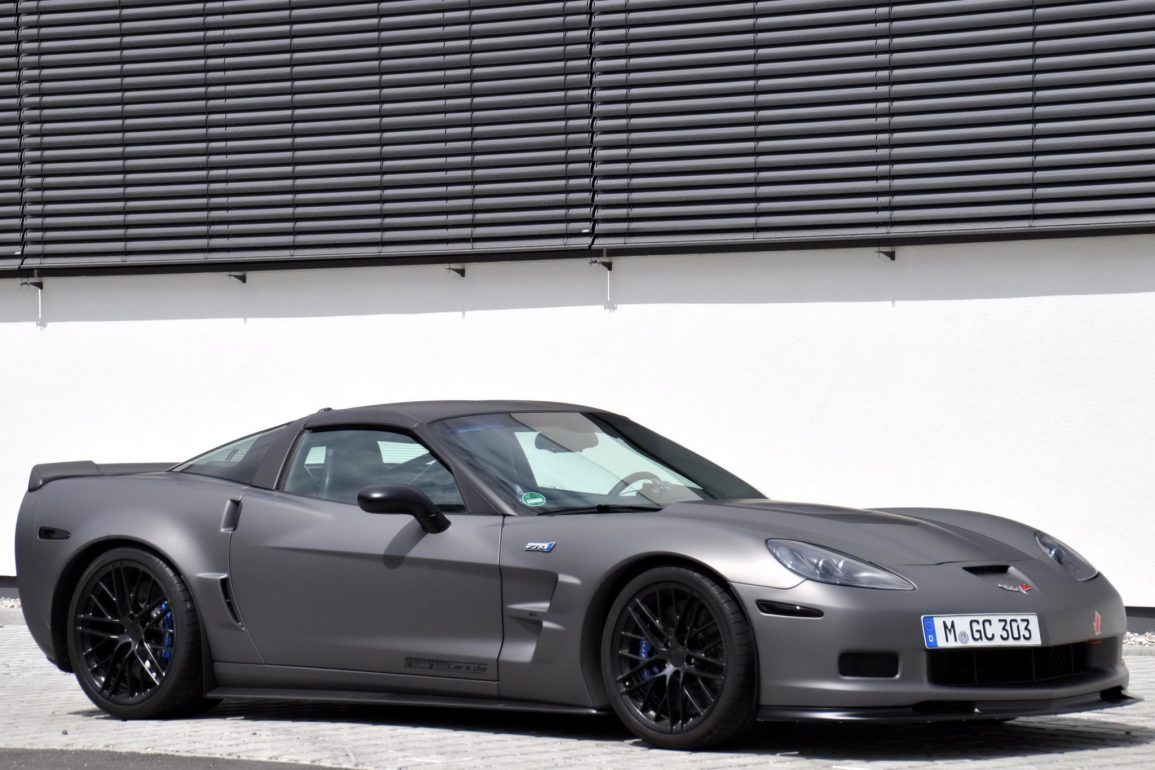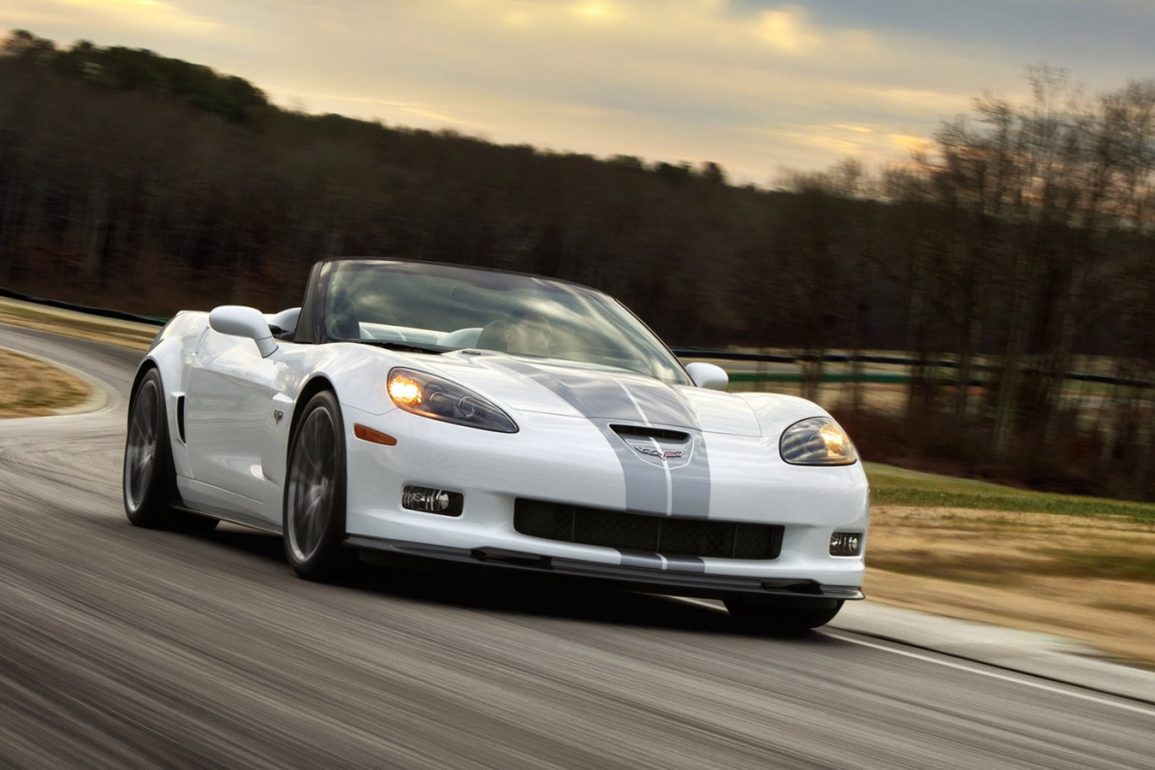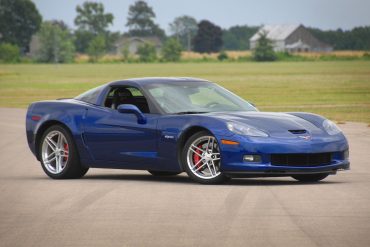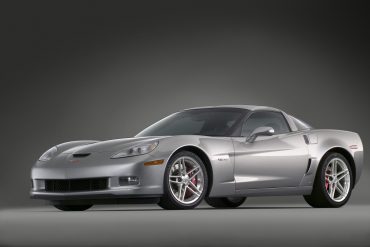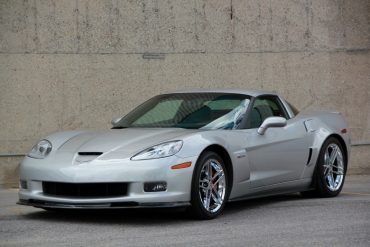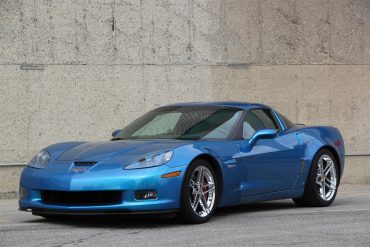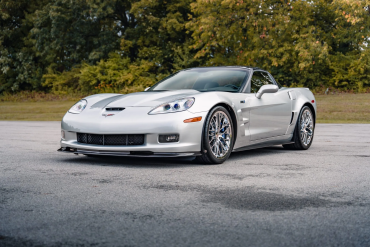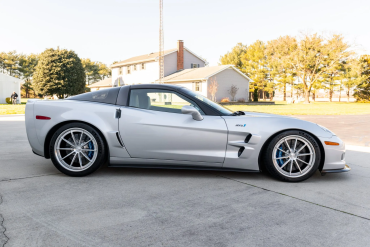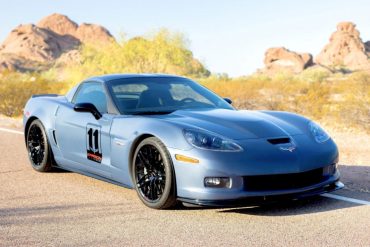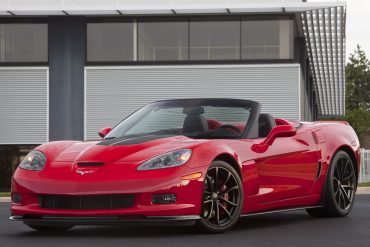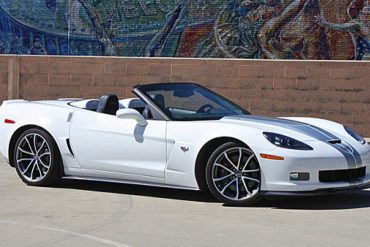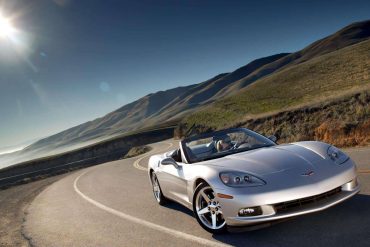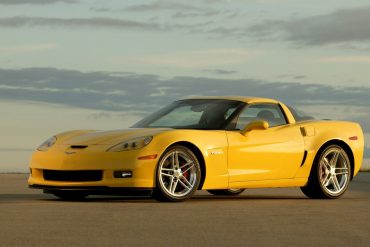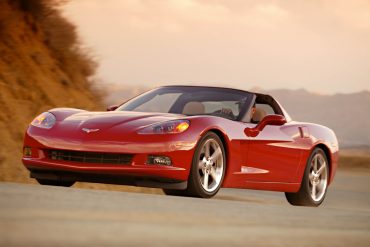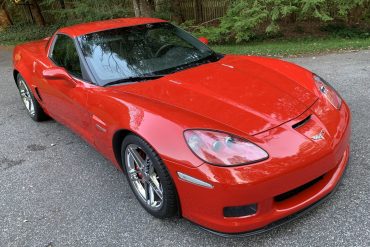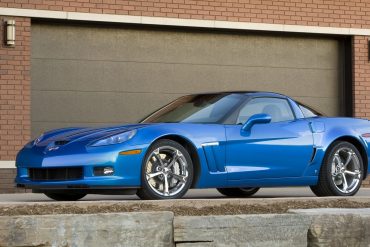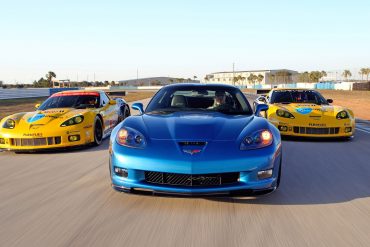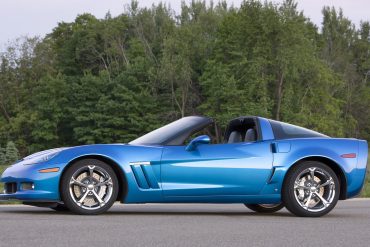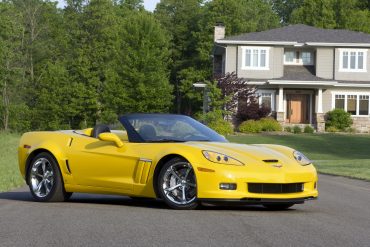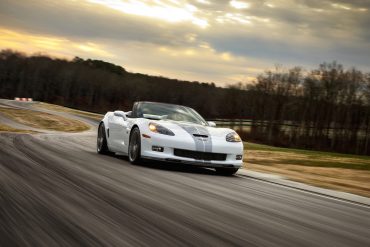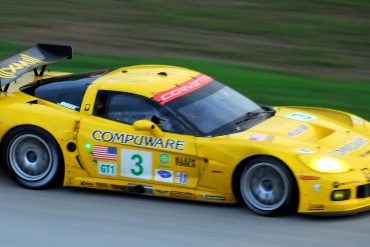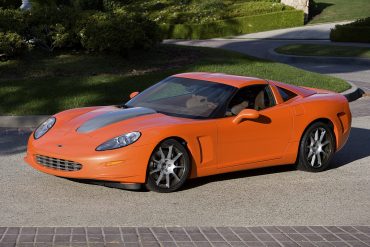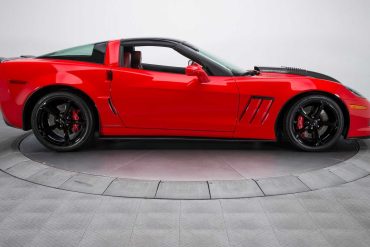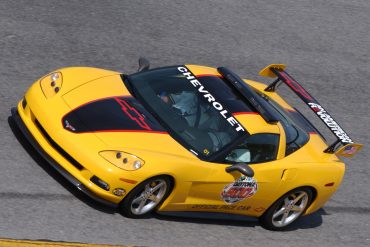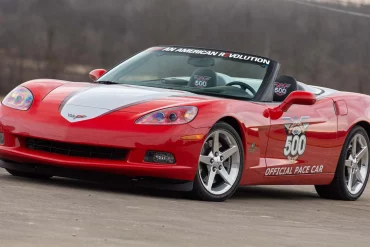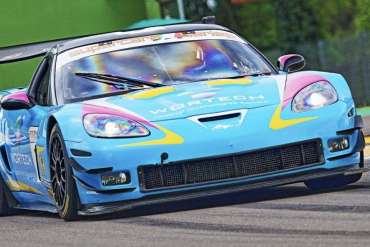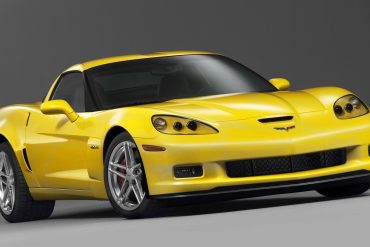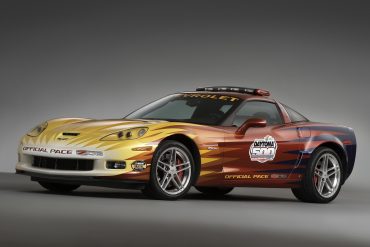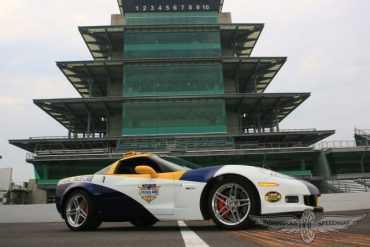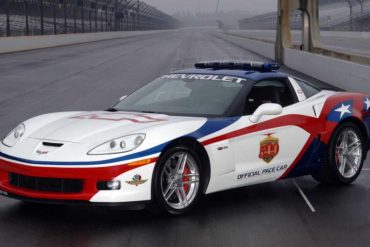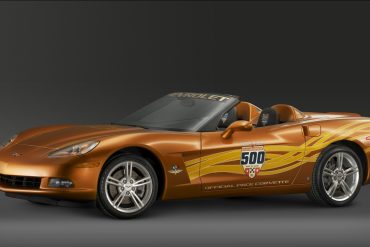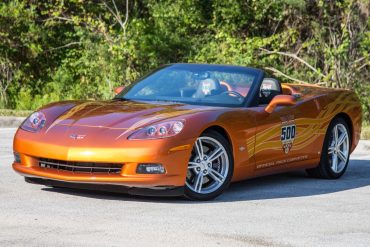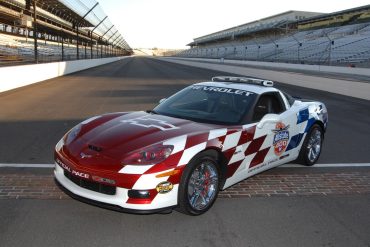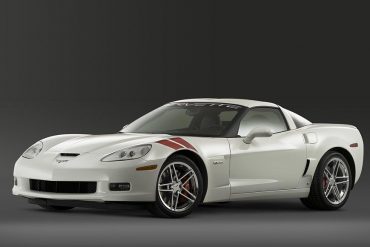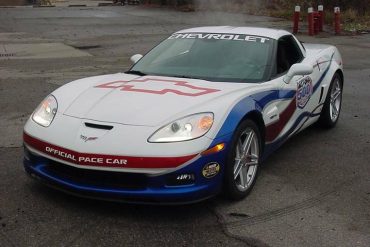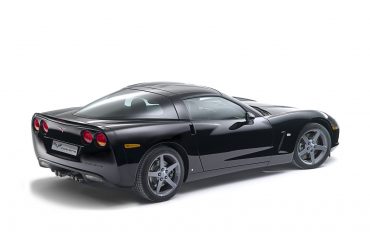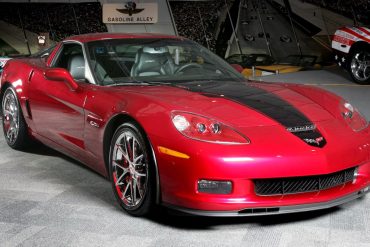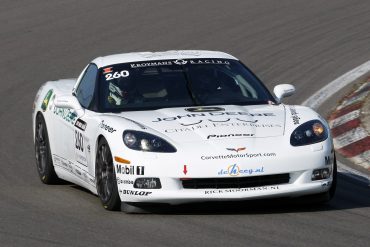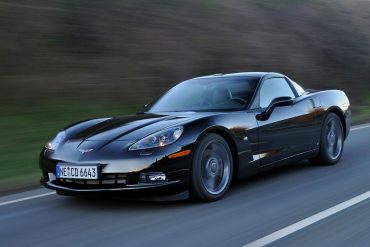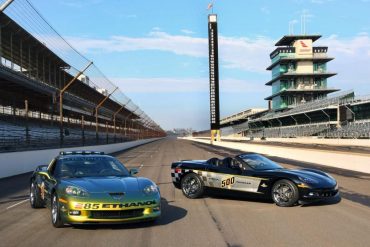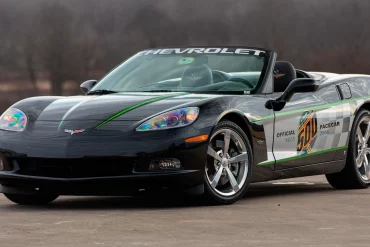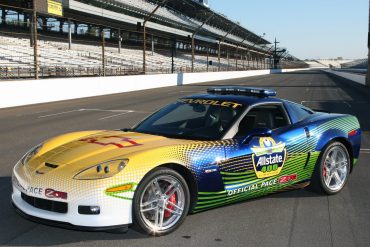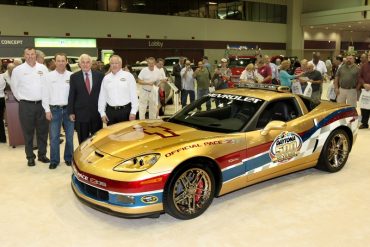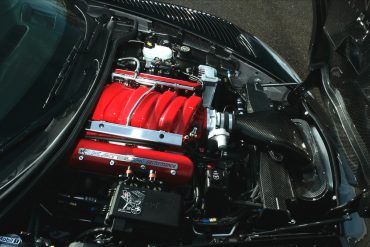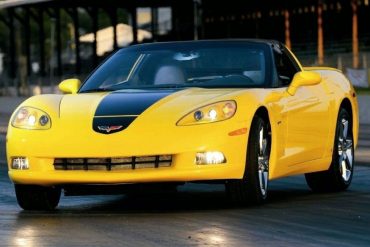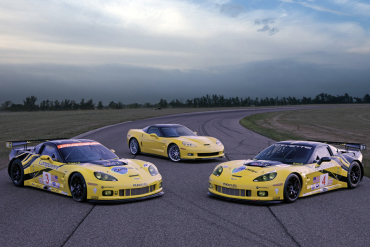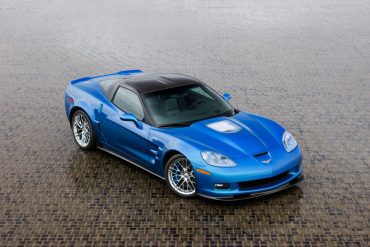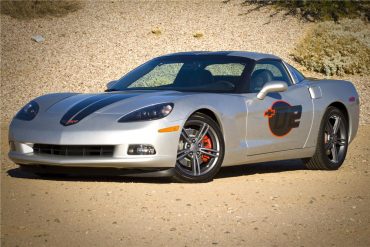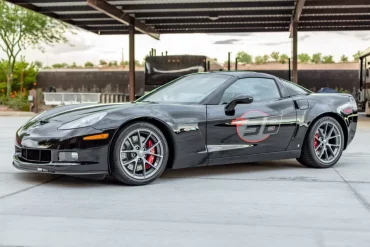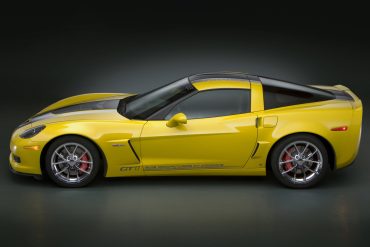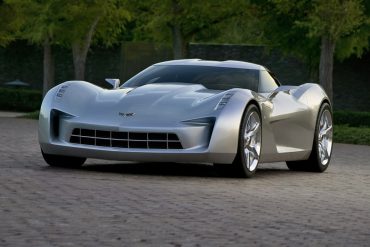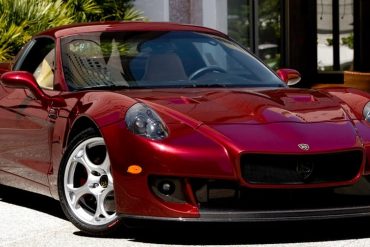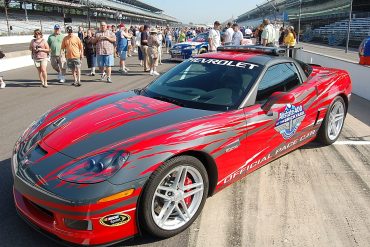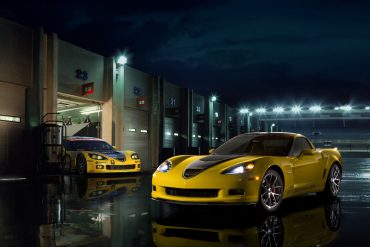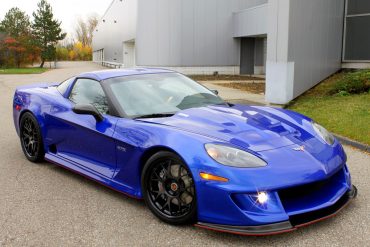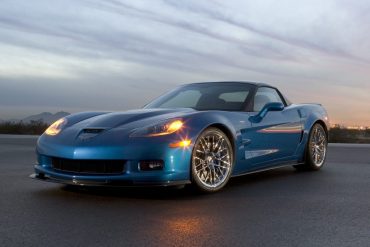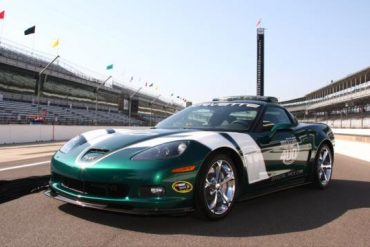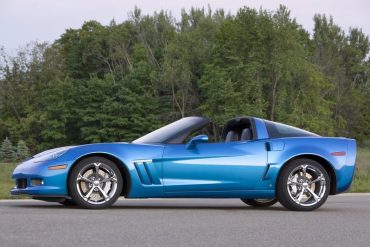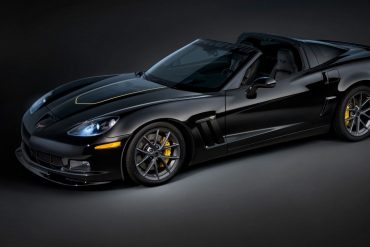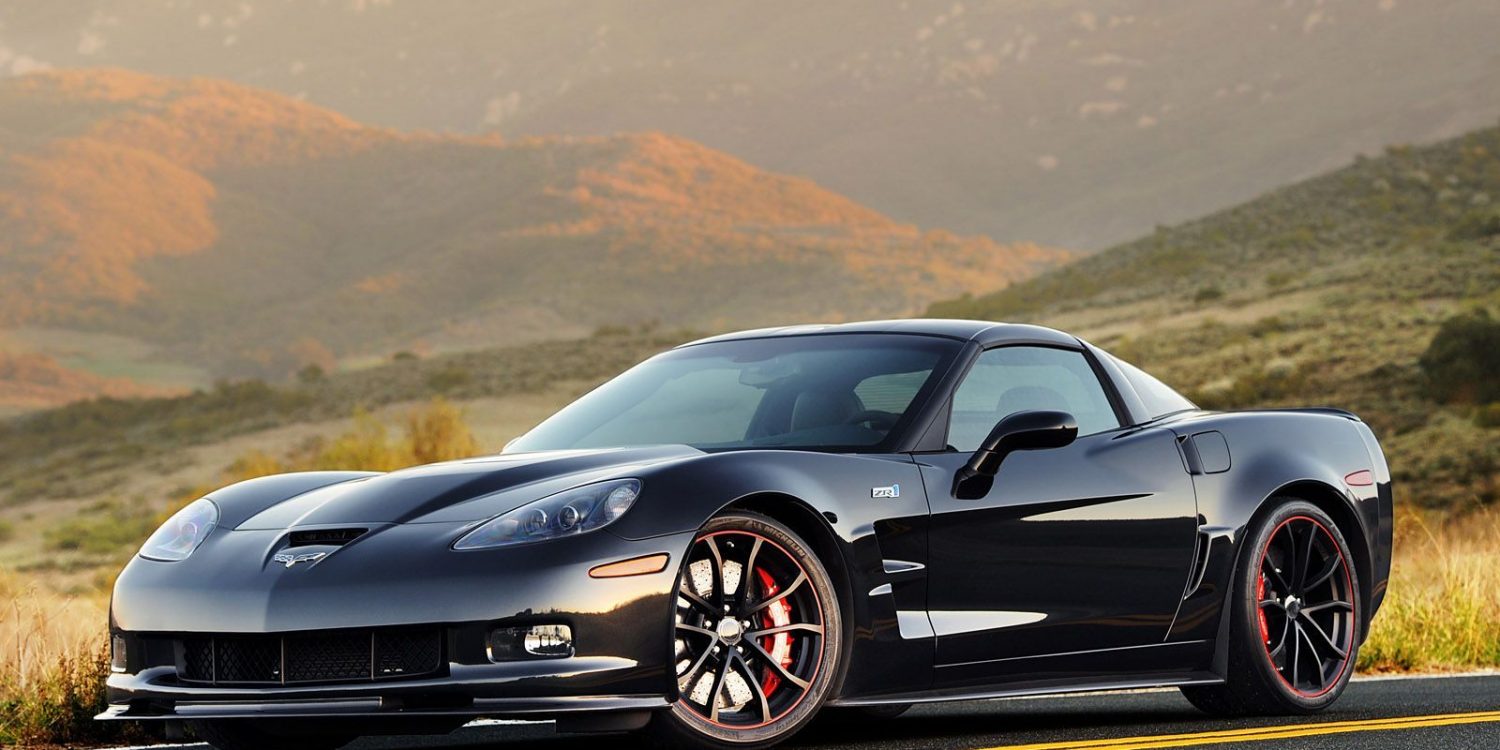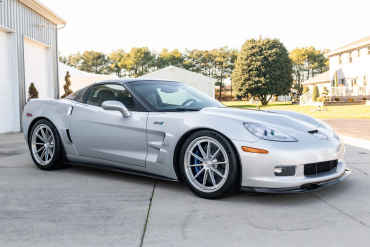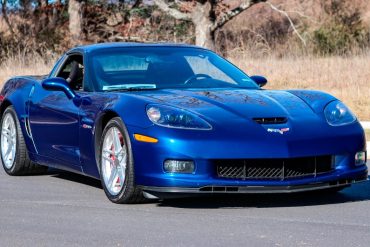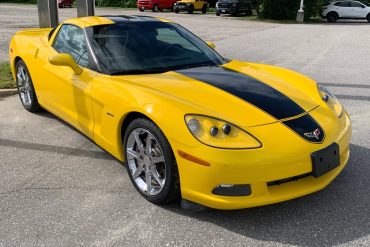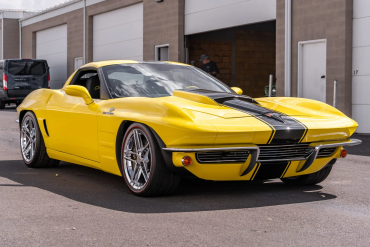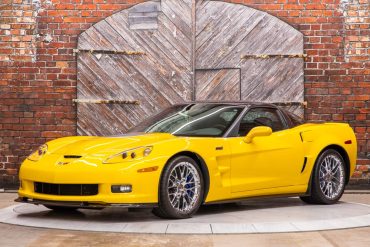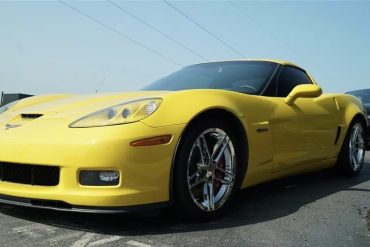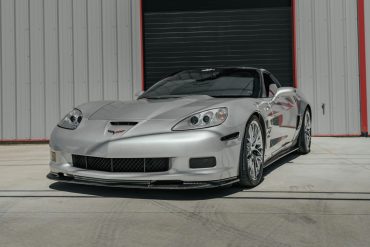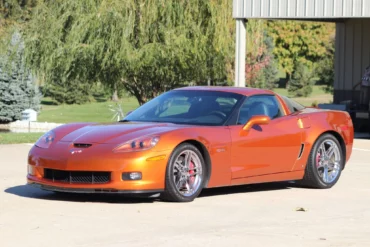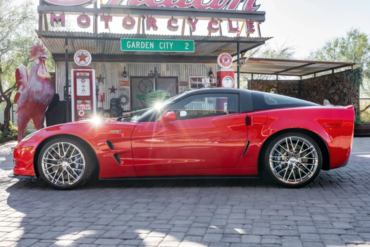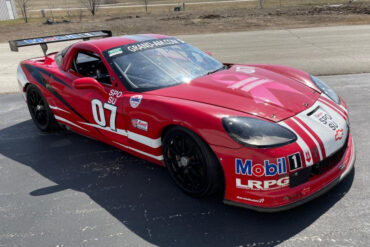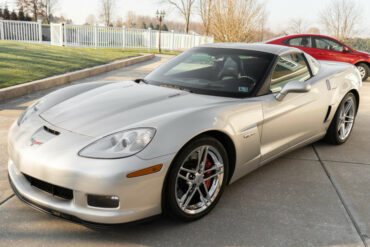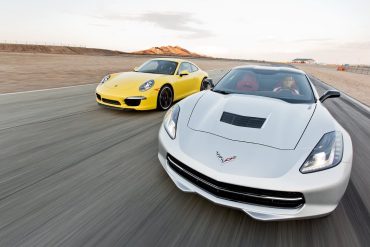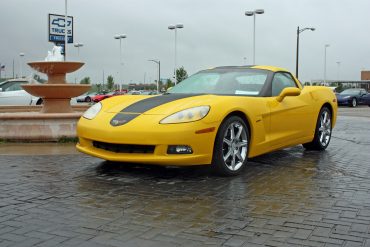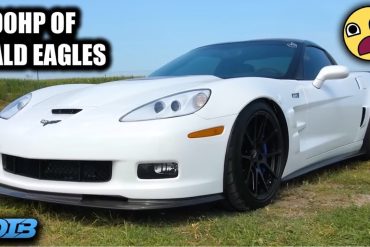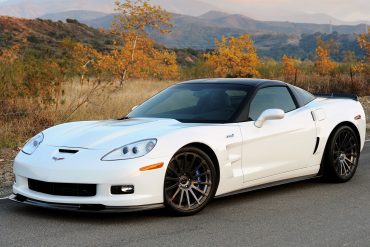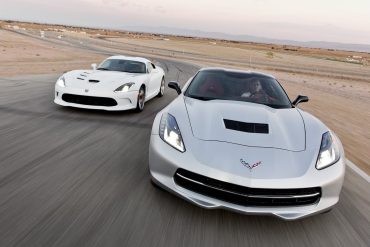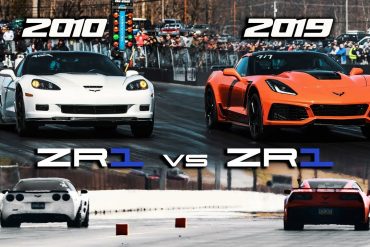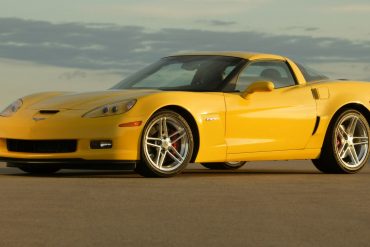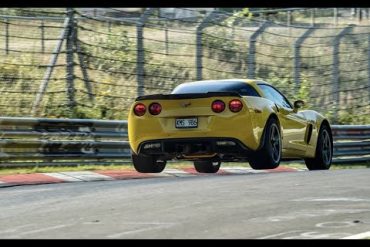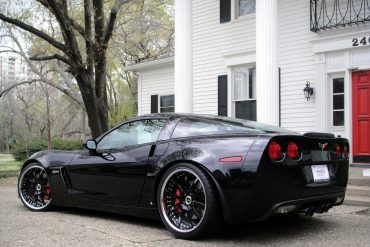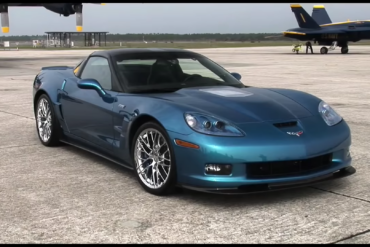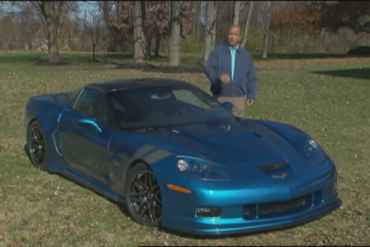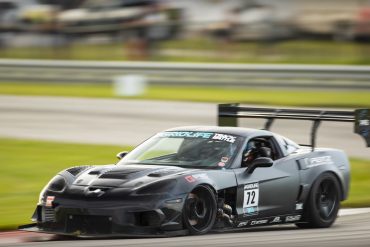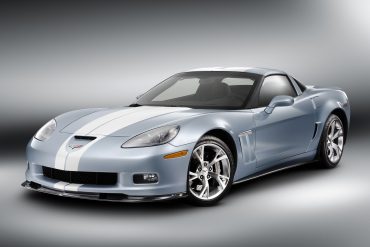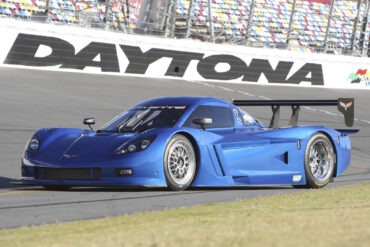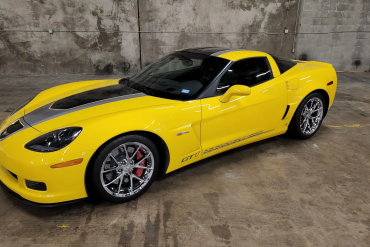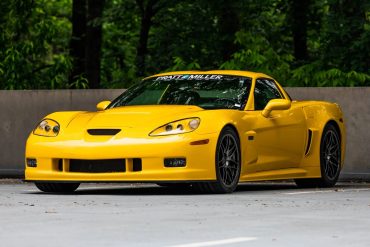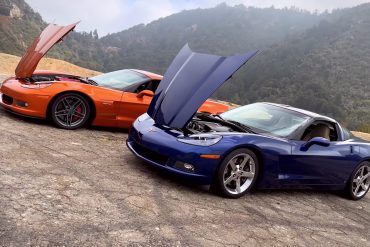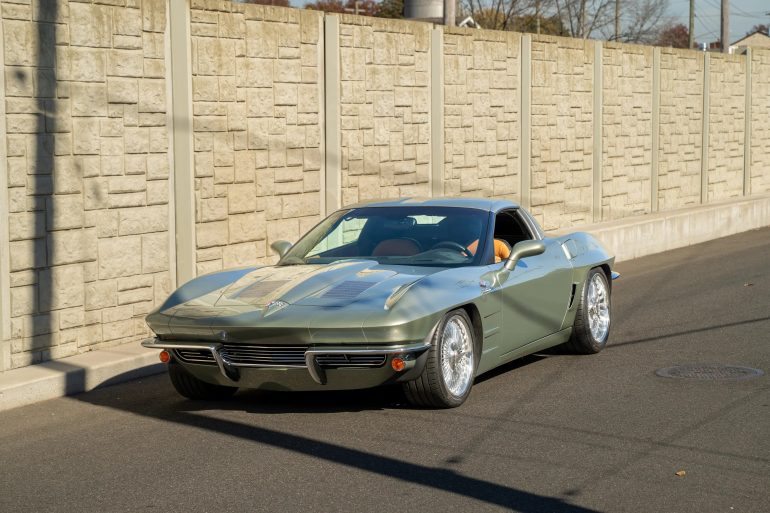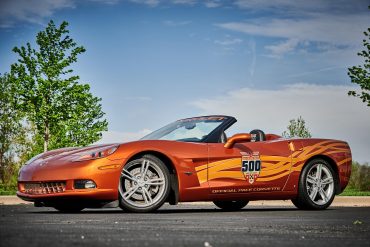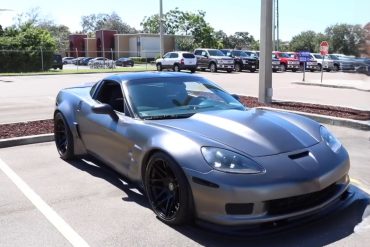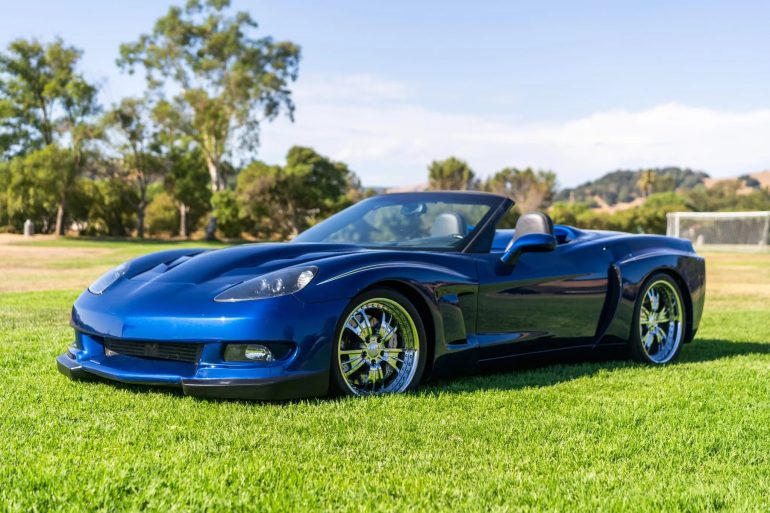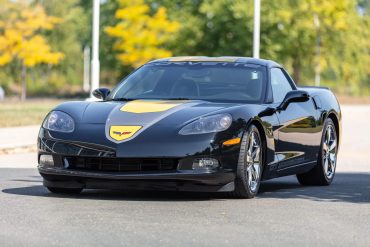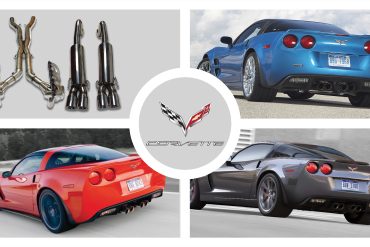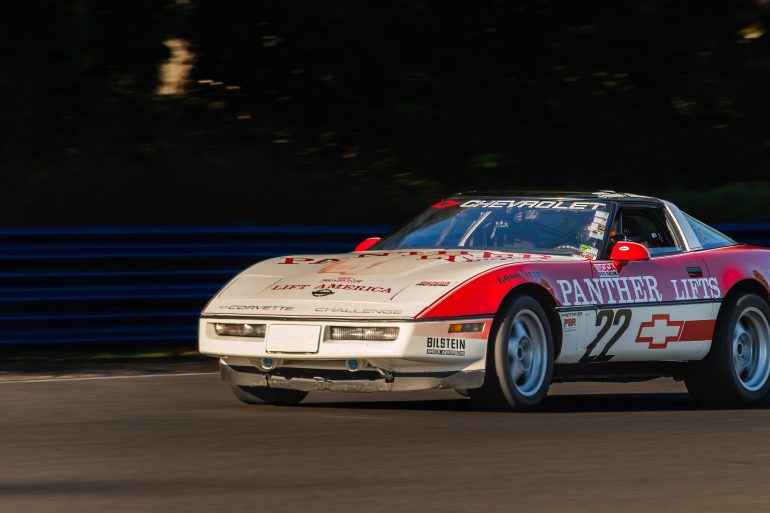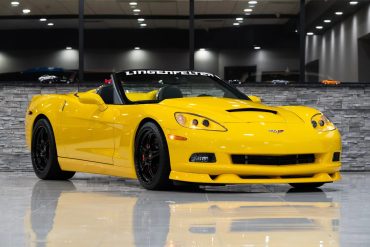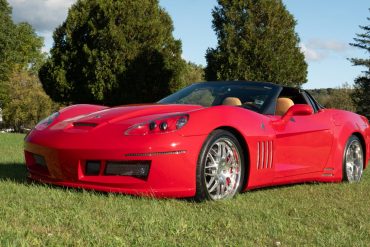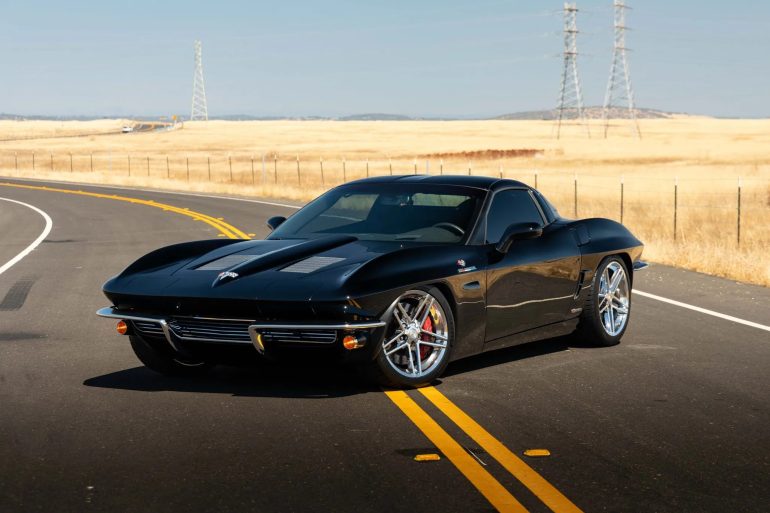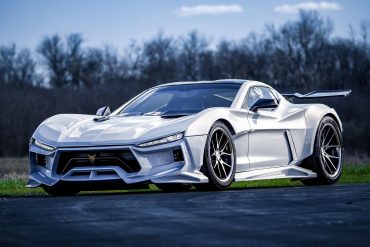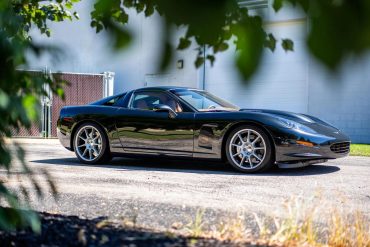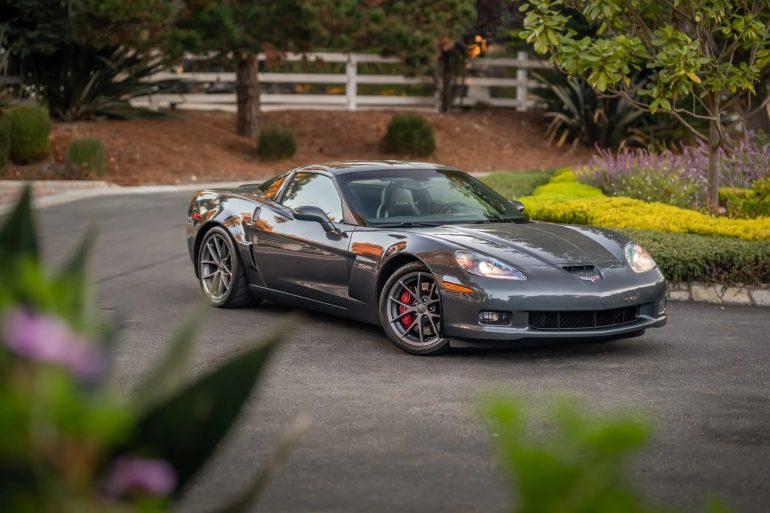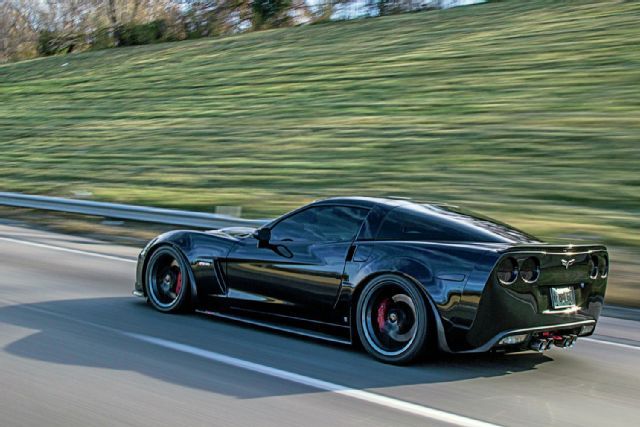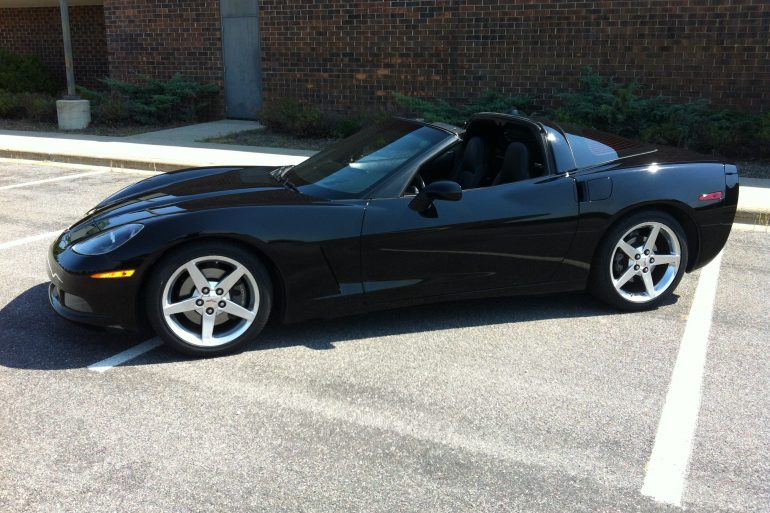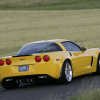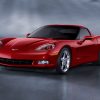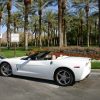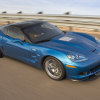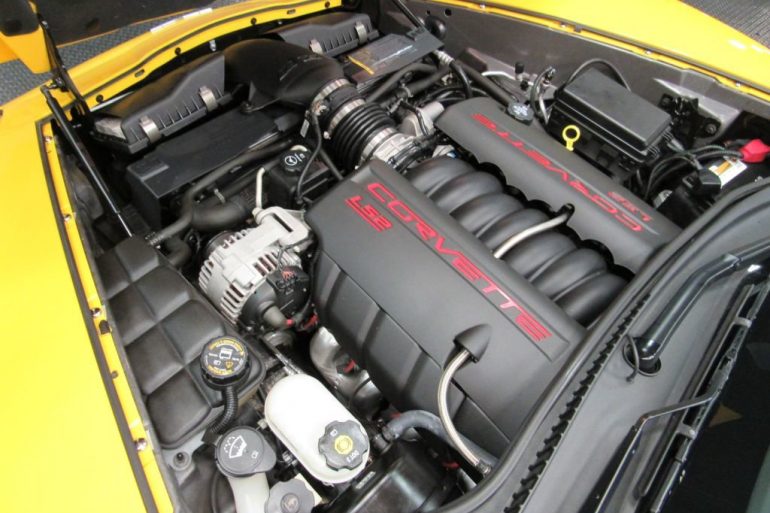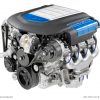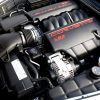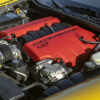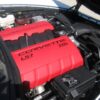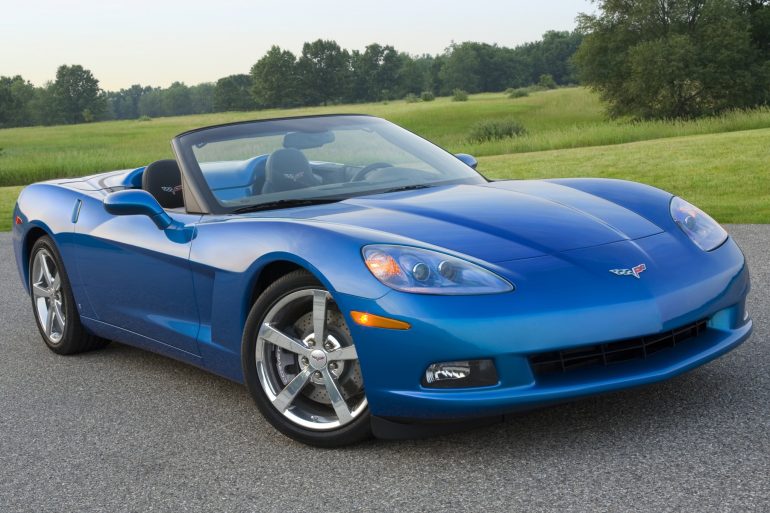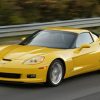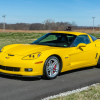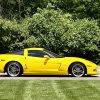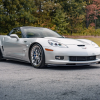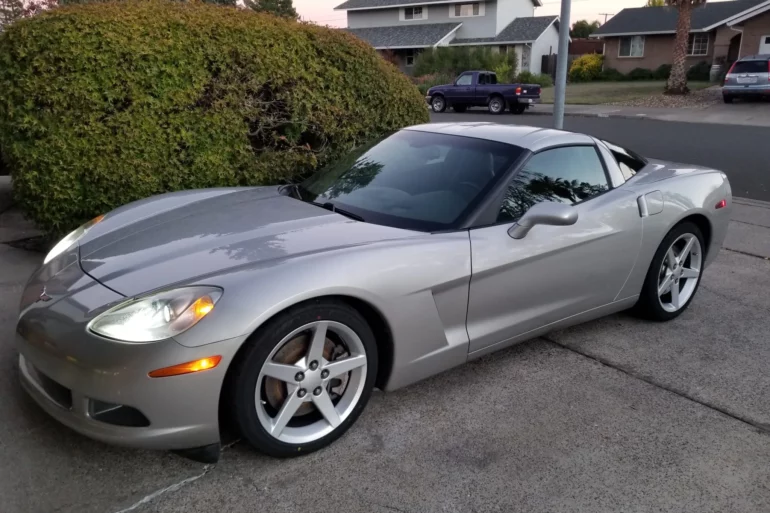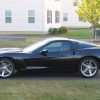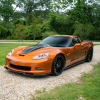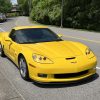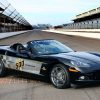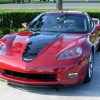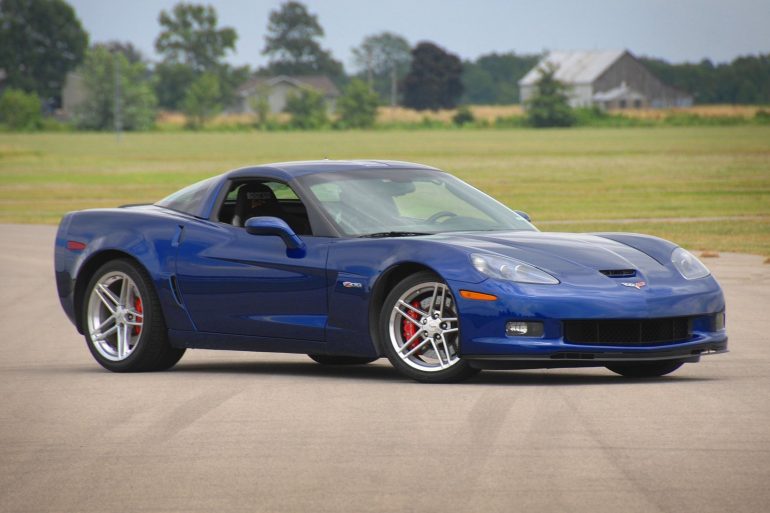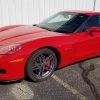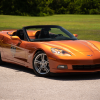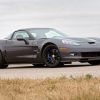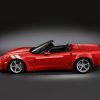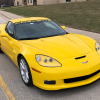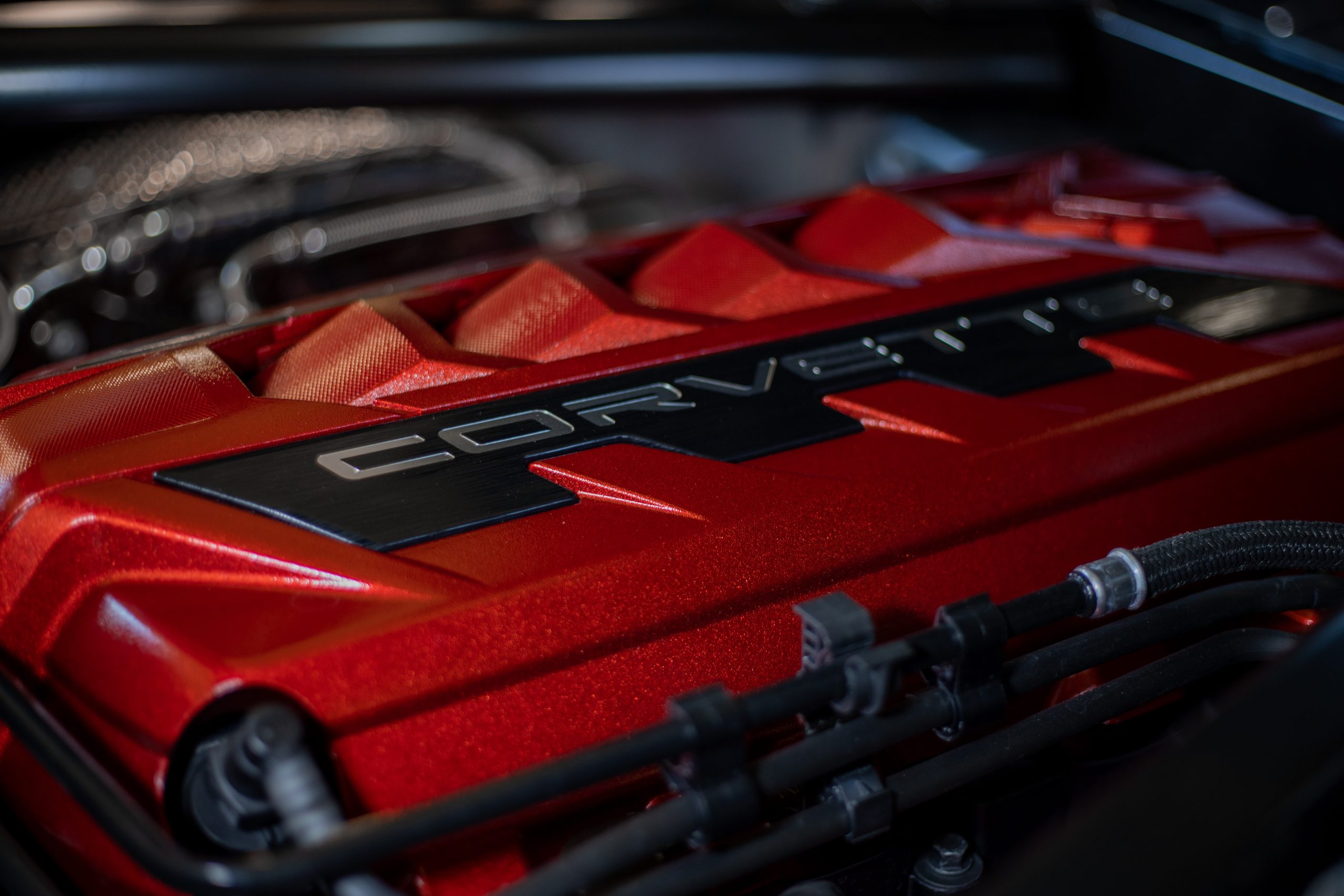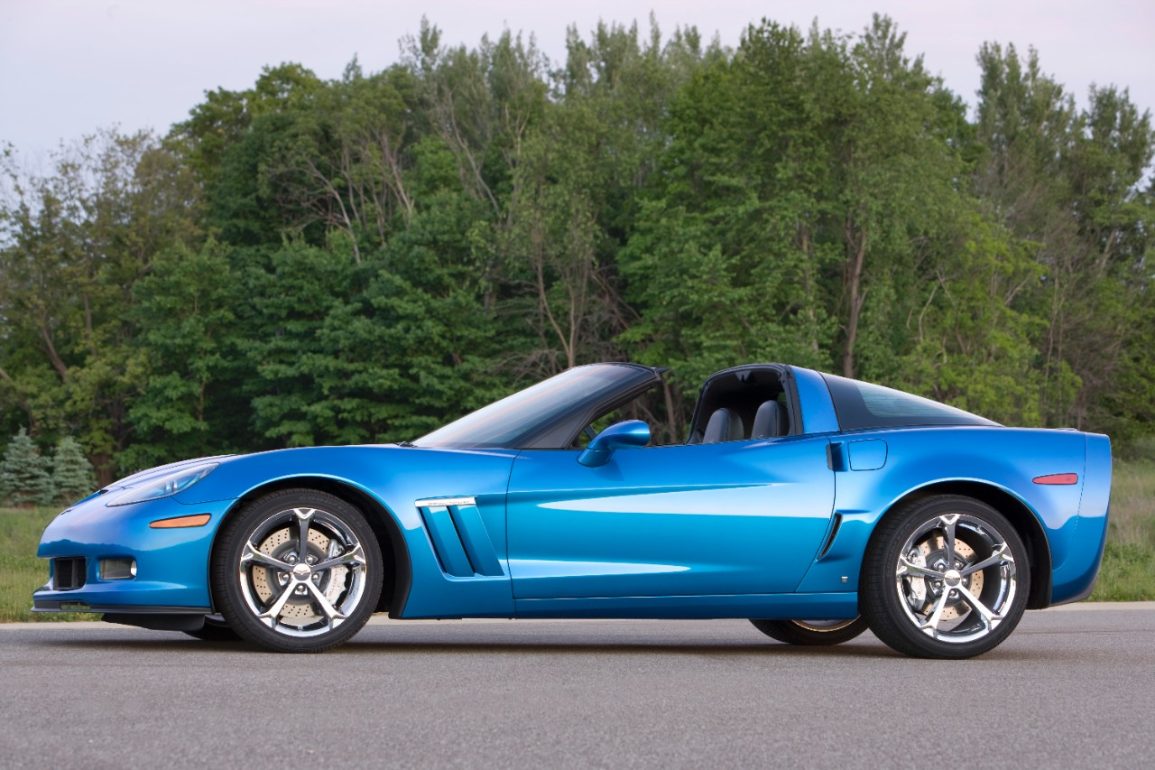
C6 Corvette - “Evolution Of A Superstar”
Research & Complete Reference Guide
Basics / The Story / Timeline / MY Research / MY Guides / Buyer's Guide / The Market / Vids & Pics / Latest / Tech Research
The C6: 2005 - 2013
After the accolades that were bestowed upon the C5 Corvette throughout it’s production run, there were many who speculated that Chevrolet had achieved perfection in their Corvette. While enthusiasts were anxious to see what Chevy had coming next, some critics seriously questioned if Chevrolet could top the performance, handling and styling of the C5.
The C5 Corvette had already been bestowed with honors that included Motor Trend’s “Car of the Year” in 1998, Automobile Magazine’s “Automobile of the Year” in 2001, and inclusion on Car and Drivers annual “10 Best” list in 1998, 1999, 2002, 2003, and 2004.
Similarly, overall sales of the Corvette were up, with Bowling Green’s Corvette plant producing roughly 33,000 Corvettes a year – a number that neared the capacity of the current Corvette manufacturing plant. To some, it looked as if General Motors was, perhaps, being hasty in their decision to move forward with a new Corvette when the C5 was performing so solidly.
Little did they realize that the best was yet to come.
In January, 2004, the new C6 Corvette was unveiled at the North American International Auto Show in Detroit, Michigan. By that same summer, the first C6 Corvettes went on sale. For most, the new 2005 C6 coupes and convertibles were being hailed as “the best Corvettes ever”, although some critics weren’t wholly satisfied. Car and Driver first described the C6 as a “C5 and 11/16th….Like the ‘68 Corvette, the 2005 is a profound evolution of the existing car. It’s one long stride on the road of continual improvement.”
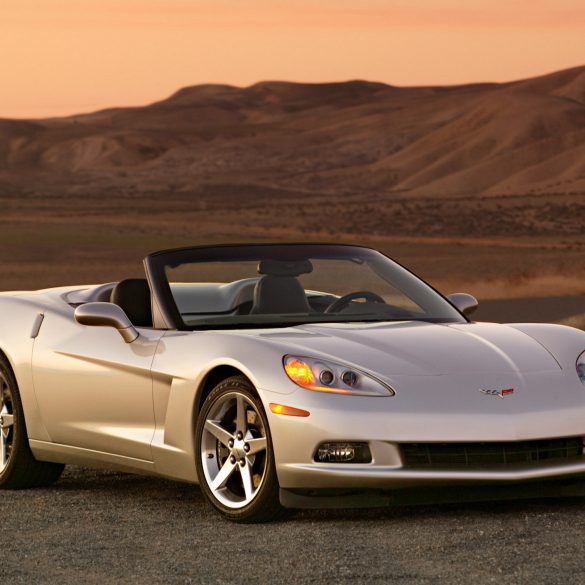 2005 Chevrolet Corvette
2005 Chevrolet CorvetteC6 Corvette Basics
Generation: C6 Corvette / Body Styles: 2 Door Coupe, 2 Door Convertible, Grand Sport Coupe, Grand Sport Convertible, 427 Convertible, Z06 Coupe, ZR1 Coupe / Production Years: 2005 - 2013 / Designed by: Tom Peters / Production: 215,123 (2005-2013) / Model Years: 2005, 2006, 2007, 2008, 2009, 2010, 2011, 2012, 2013
The C6 Corvette Story & Details
When comparing the Corvette to the competition, it’s of little surprise that General Motors decided to follow in the footsteps of such manufacturers as Porsche, whose 911 has been the product of evolution for more than 40 years. The C5 was a revolutionary Corvette, and even after eight model years, it remained a strong seller that offered unparalleled value and performance, even amongst sports cars that are far more expensive. GM recognized that they had developed a world class contender in the sports car arena and felt that evolution, not re-creation, was the path to follow, allowing the Corvette to evolve into something even more exciting and powerful.
And so evolution was the path that the Corvette team decided to pursue.
In some respects, the C6 Corvette could be considered the C5 after an extreme makeover. The new Corvette has a sleeker, more chiseled appearance, with more horsepower, and noticeably improved levels of quality and refinement. Unlike any other Corvette before it, the C6 was also the first ‘Vette to be developed in tandem with another GM car – the Cadillac XLR, the suave two seat retractable-hardtop convertible launched for 2004 as the for-sale version of the striking 1999 Evoq concept car.
Both the XLR and the three C6 models (the coupe, the convertible, and the Z06) were planned for the GM Performance Vehicle Architecture introduced with the C5. Senior managers assigned the Corvette design and engineering group the responsibility to develop all of these cars, making sure that they focused first on the Cadillac XLR because it would launch before the Corvette and would stand as a symbol for an emerging renaissance for GM’s luxury brand. In fact, the Corvette team was prevented from beginning work on the Corvette designs until they were complete with the XLR.
Upon completion of the XLR, the Corvette team turned their full attention to the process of developing the C6 Corvette, which was under way in earnest by mid 2000. As a result, the new C6 was not totally new in concept, though it was very new in content. Much of that newness is actually the result of the XLR being part of the design process. According to assistant chief engineer Tadge Juechter, his team “had to engineer that car first and yet not allow it to compromise our vision for what the C6 needed to be. Because (Corvette) customers would see through that right away. But we intentionally let the Cadillac rub off in areas where we thought it was important to improve the Corvette.”
According to Chief Engineer Dave Hill, “We had really stretched to upgrade the C5 each year. We wanted to stretch again and annihilate the compromises we had been living with. We went at the new one with the idea of ‘more exciting’ but with a surprising amount of refinement that people wouldn’t believe possible at Corvette’s performance level. We wanted once again to exceed expectations, even if not in a clean-sheet way. But we knew customer expectations would be real high, and we set out to beat ‘em all.”
The team identified nearly 100 items (“dissatisfiers” as Hill calls them) that the Corvette team needed to change and/or improve based on complaints from C5 Corvette owners. Certain of these items posed a unique challenge for chief designer Tom Peters and lead exterior designer Kirk Bennison. Some of the widespread criticism the C5 received was that it was a bit large for a high-power sports car. Reducing size and unnecessarily bulk would increase car performance and would make the Corvette more functional in crowded urban conditions – an important consideration for Europe, where GM wanted to boost Corvette sales.
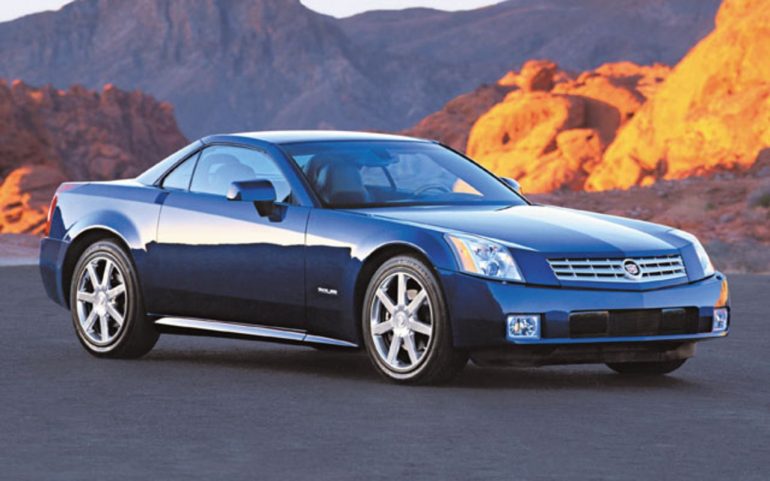 The Cadillac XLR
The Cadillac XLR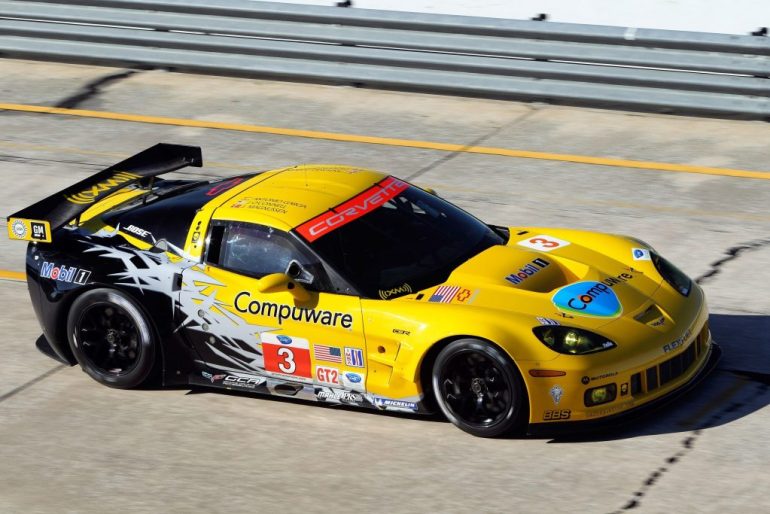 The C6.R Racer Corvette was developed in tandem with the production C6.
The C6.R Racer Corvette was developed in tandem with the production C6. Tom Peters, Chief Designer of the C6 Corvette.
Tom Peters, Chief Designer of the C6 Corvette.The C6 Corvette was designed by Tom Peters, who, like Harley Earl before him, had more than a passing interest in military aircraft. The C6 was conceptualized as a re-imagining of the C5 Corvette, though much of it’s bodystyle was actually drawn from the C2 Corvette and the YF-22 Interceptor, the Air Force’s latest and greatest fighter jet.
DID YOU KNOW?
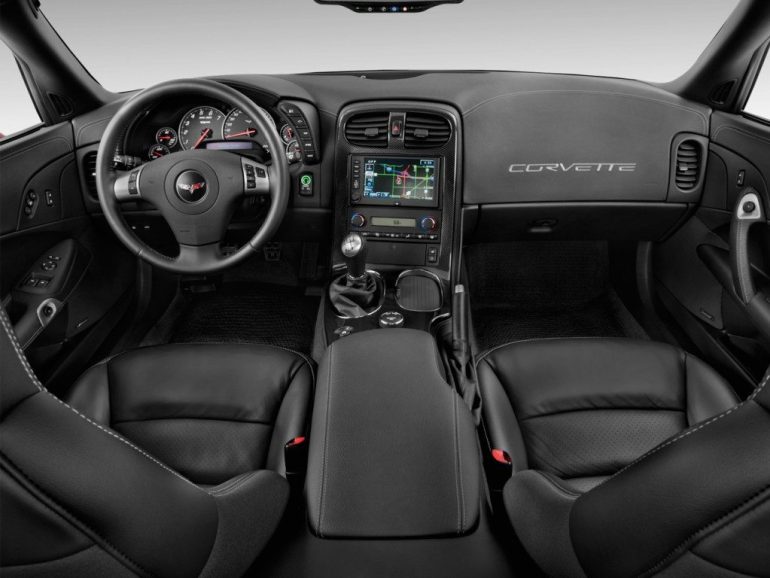 The C6 Corvette Interior.
The C6 Corvette Interior.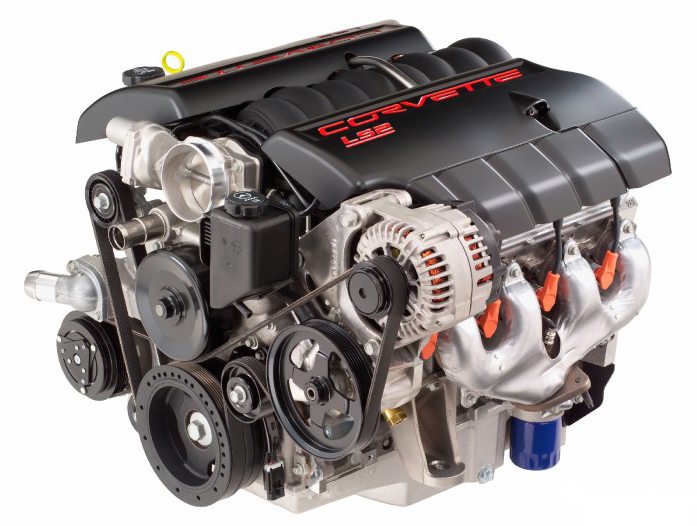 The LS2 6.0 Litre 365 Cubic Inch Small Block V-8 Engine.
The LS2 6.0 Litre 365 Cubic Inch Small Block V-8 Engine.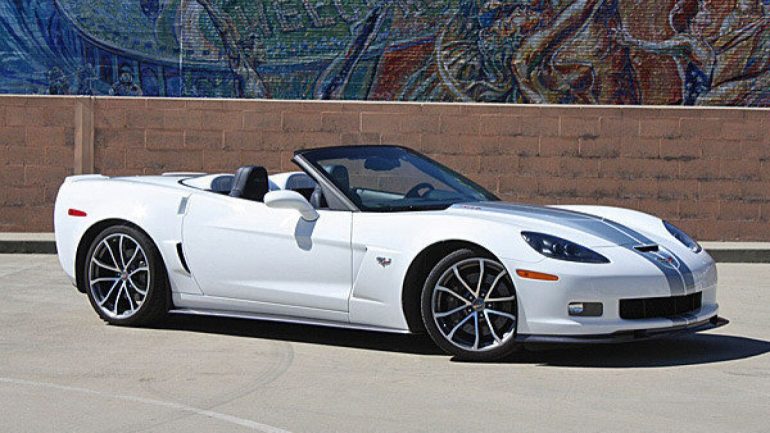
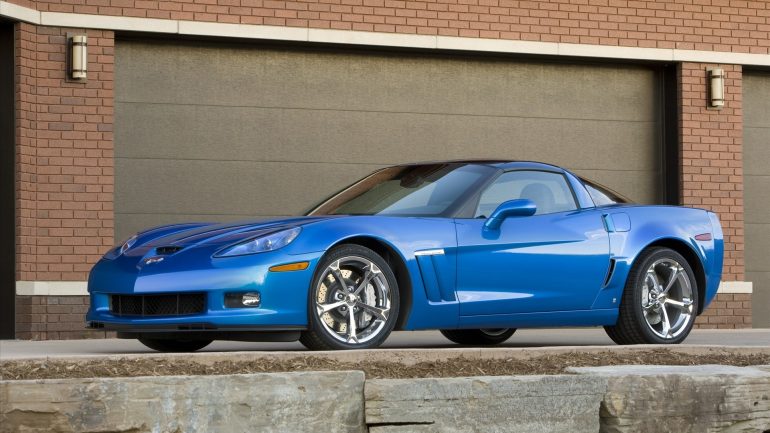
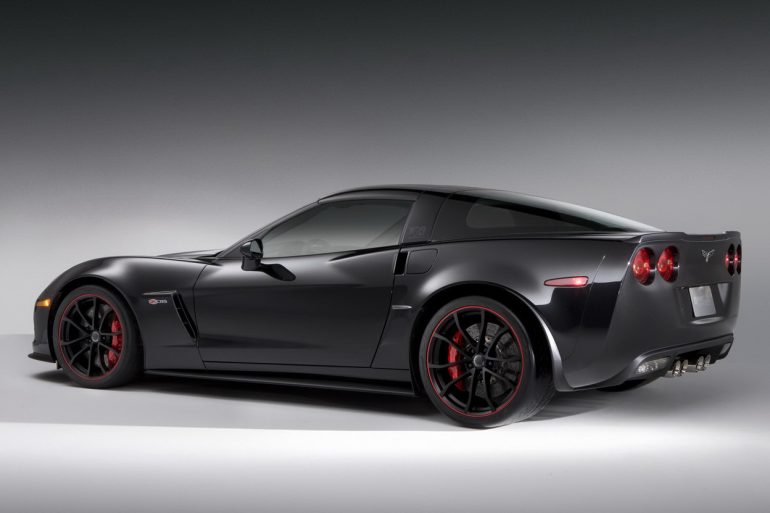
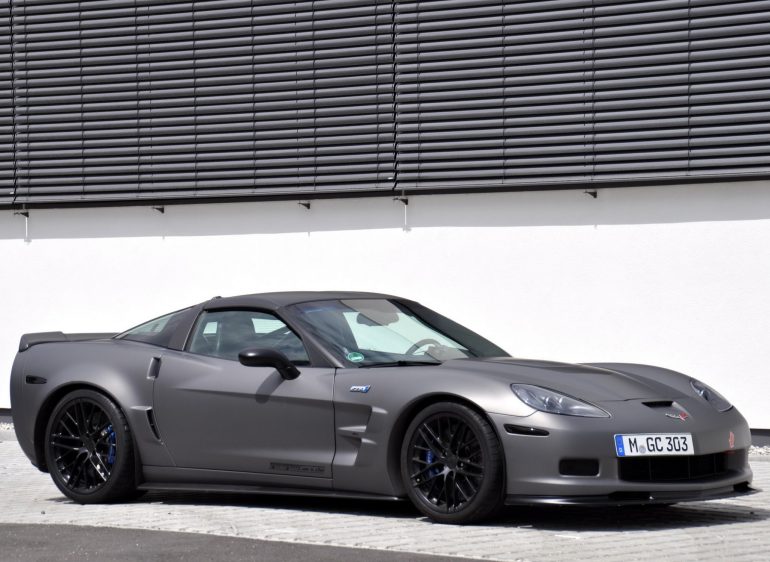
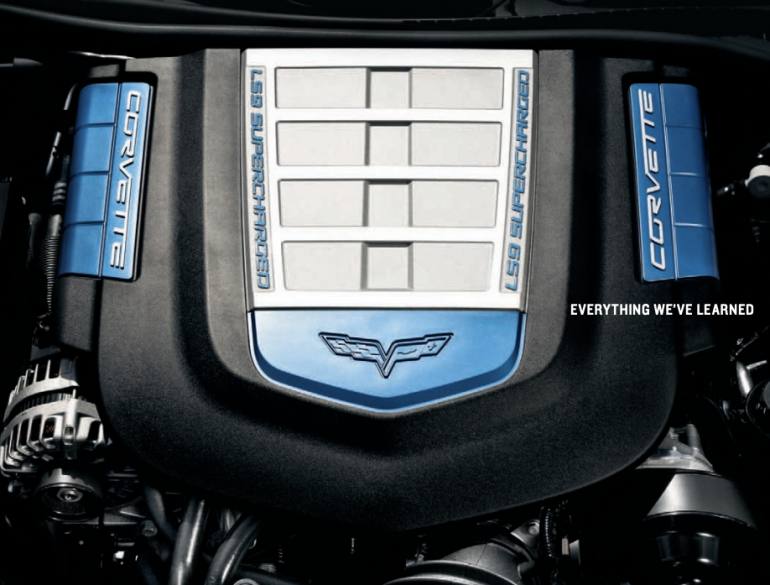
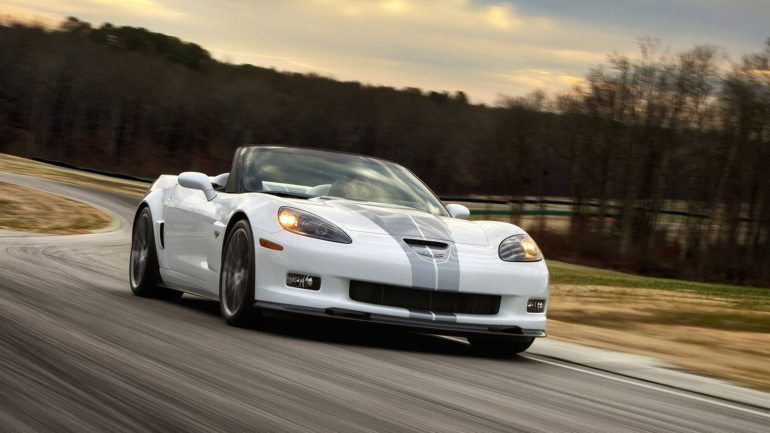
C6 Corvette Development
Another of the issues was the desire for improved aerodynamics, which had great implications for the new C6.R racer. The race team was brought in to work with the engineering/design team on the development of both the base models and (even more so) on the Z06. It was important to identify what real-world elements would translate back into the production car and the race car as well. For example, the C5 Corvette had a split grille that was often criticized as being too similar to the design stylings of GM’s Pontiac line. The design teams wanted to return to the design style of the older Corvettes, which had a center port opening, and this change actually worked well for the race team as well, allowing more direct air flow into the engine area.
Another of the issues was the desire for improved aerodynamics, which had great implications for the new C6.R racer. The race team was brought in to work with the engineering/design team on the development of both the base models and (even more so) on the Z06. It was important to identify what real-world elements would translate back into the production car and the race car as well. For example, the C5 Corvette had a split grille that was often criticized as being too similar to the design stylings of GM’s Pontiac line. The design teams wanted to return to the design style of the older Corvettes, which had a center port opening, and this change actually worked well for the race team as well, allowing more direct air flow into the engine area.
Beyond competition needs, the C6 styling was influenced by the C2 Stingray. When Tom Peters was brought to the table to champion the design of the new C6 Corvette, he turned to the Stingray for influence – not because of any affinity for retro car design – but because the Stingray contained elements in it’s design that made the car powerful and allowed it to make a bold statement of design for that era of Corvette. Another styling influence was Peter’s love of aircraft. Much like Harley Earl drew inspiration from the P-38 Lightning, Peter’s influence was most directly derived from the YF-22 jet fighter.
Tom Peters, Chief Designer of the C6 Corvette.
Per Peter’s own words, “You have those peaked fender shapes. You’ve got the way that upper sits on the body, like a jet-fighter canopy cockpit….It’s expressive but it’s integrated, It’s singular in nature…It’s one overall cohesive, bold statement.”
When reviewing the design of the C6, it’s easy to draw the comparison between both design elements. The upper portion of the C6 has a lot more taper, it’s a lot more pointed in the rear, and it is more jet-fighter-like in profile. Similarly, the rear decks possess a “boattail” characteristic that sweep neatly back from the belt – a throwback of the split window design of the 1963 Sting Ray coupe.
The trademark four tail lamps are almost perfectly round again, and reside in a more sculpted back end panel that is more aptly proportioned to the car than was the wider back end of the C5 Corvette. The body sides – from the front fenders back – create visually interesting lines, while pronounced “coves” provide a “tip of the hat” to the 1956 Corvette, the model that launched Corvette on a path to success both as a production car and as a racer.
The C6 Corvette measures 5.1 inches shorter and an inch narrower than the C5, but is 1.2 inches longer in wheelbase at 106 inches. That wheelbase was dictated by packaging requirements for the Cadillac XLR, but it adds to the Corvette’s purposeful new “wheels at the corners” stance. The wheels themselves are larger, with front tires measuring in at 18 inches and the rears at 19 inches. The one downside to the downsizing of the C6 is that the car contains slightly less cargo space. Whereas the C5 coupe provided 24.8 cubic feet of usable cargo space, the C6 coupe offers a mere 22 cubic feet. For the convertibles a similar 13.9 cubic inches in the C5 has been reduced to 10.5 cubic feet max storage.
To complement the more refined and sophisticated exterior, Peters and lead interior designer Eric Clough developed an all new interior that improved on the finish and feel of the interior. The C5 was criticized by many Corvette enthusiasts for feeling to “plasticy” and being too dark (most of the C5 interiors feature an extensive amount of black colored components). Similarly, along with the body styling of the exterior, one of the key components to the redesign was a simplification of the overall design. While the dashboard is laid out like the C5’s, the sculpted “twin cowl” theme gives way to a clean, vertical, passenger side panel with a hidden airbag door. New seats offer longer cushions and more prominent side bolsters. Accents of aluminum and metal-look accents provide a sense of modern “hi tech” to the gauge clusters and center console – including the stereo and climate control devices.
There are a number of other notable changes to the interior as well. For the first time in any Corvette, designers decided to include an optional center stack navigation system (available for an additional $1400.00). A reworked center console now included twin cup holders beneath a sliding cover and a larger armrest/storage bin. The ignition key has been replaced by a large engine-start rocker switch which is part of a standard keyless entry system that operates via a pocket transmitter.
General Motors recognized that the evolution of the C6 Corvette would also require a power plant to give it the muscle to back it’s boastful appearance. Although the C5 had the impressive LS1 engine beneath it’s hood, the LS1 Chevy small block received a facelift (much like the rest of the C6) that revised it sufficiently to earn it the new badge designation LS2. The changes made to the engine included a 2.6 mm bore stretch to 101.6 mm, which ups the engine’s total displacement to 6.0 liters or 365 cubic inches. Compression increased from 10.1:1 to 10.9:1. The intake system was redesigned to intake 15 percent more air. The exhaust system gains a lightweight thin-wall manifold with 20 percent higher outflow, plus straight-through pipes and new mufflers that reduce back pressure 10 percent.
These (and other) modifications increase the performance from 350 horsepower at 5200 rpms to a staggering 400 horsepower at 6000 rpms. Torque increased from 360/375 pound-feet at 4000 revolutions to a stout 500 at 4400 revolutions. In order to gain some perspective on the performance increase of the C6, the LS2 engine is only five horses down on the previous Z06’s LS6 engine and makes the same torque at slightly lower revs – and that’s just the coupe! The C6 Z06 offers even more staggering numbers (please visit the C6 Z06 section for details).
As with previous generations, the convertible and base coupe both offer a choice of a six speed manual or a four speed automatic transaxle (transmission). The four speed automatic received a Cadillac-style Performance Shift Algorithm programming, while the Tremec T56 manual boasts a revised linkage with more positive action and a shorter shift lever. The manual transmission was also fitted with Computer Aided Gear Selection (CAGS), obligating the driver to shift directly from first to fourth when driving at lower RPMs. This addition would boost the Corvette’s derived fuel economy, eliminating prospective buyers from being required to pay a “gas guzzler” tax charged on some vehicles that have documented poor fuel mileage. Unlike the C5, which carried extra cost for a manual transmission, it was decided that the C6 would offer the manual transmission as a standard option, although the automatic would also be available at no additional cost.
Even as the C6 Corvette became available to the public for the first time, the car had already gained a reputation amongst Corvette and sports car enthusiasts of not only meeting the expectations set by the C5, but far exceeding them. Even in comparisons performed by non-biased third party reviewers, the C6 Corvette was ready to demonstrate the steely stuff it was made of. Car and Driver’s “10 Best” list for 2005 stated boldly that the new C6 Corvette beat out a one-point win over the redesigned 2005 Porsche 911 Carrera in a comparison test.
Road & Track magazine showed that “the Corvette came in first in a nine-way sports-car showdown.” R&T further stated that “The C6 has no real weaknesses and many strengths. It possesses world-class performance, a high level of comfort and dashing good looks. And it’s available for nearly half the price of a Porsche Carrera S. America’s sports car is now back in its rightful place atop the sports-car mountain.”
C6 Corvette Special Model Guides
The ultimate guide to each and every C6 Corvette era special edition and concepts.
The C6 Corvette Market - Sales & Auctions
C6 Corvettes for Sale. This is our C6 Corvette auction and sales area. We share upcoming auctions, recent auction results, cool C6 Corvettes we find for sale and commentary on the current market for C6 Corvettes.
The C6 Corvette Newsfeed
Get all the latest news stories, upcoming auctions, cool cars for sale, prices, videos and more about the C6 Chevrolet Corvette! The latest headlines here.
C6 Corvette Technical Research
Production and sales numbers, order guides and sales brochures, we have more C6 Corvette research than you could ever want.
C6 Production
Ever wanted to know just how many C6 Corvettes were made? We have you covered.
C6 Pricing
Looking to decode your C6 Corvette or find the options and pricing for reference. See them all below.


